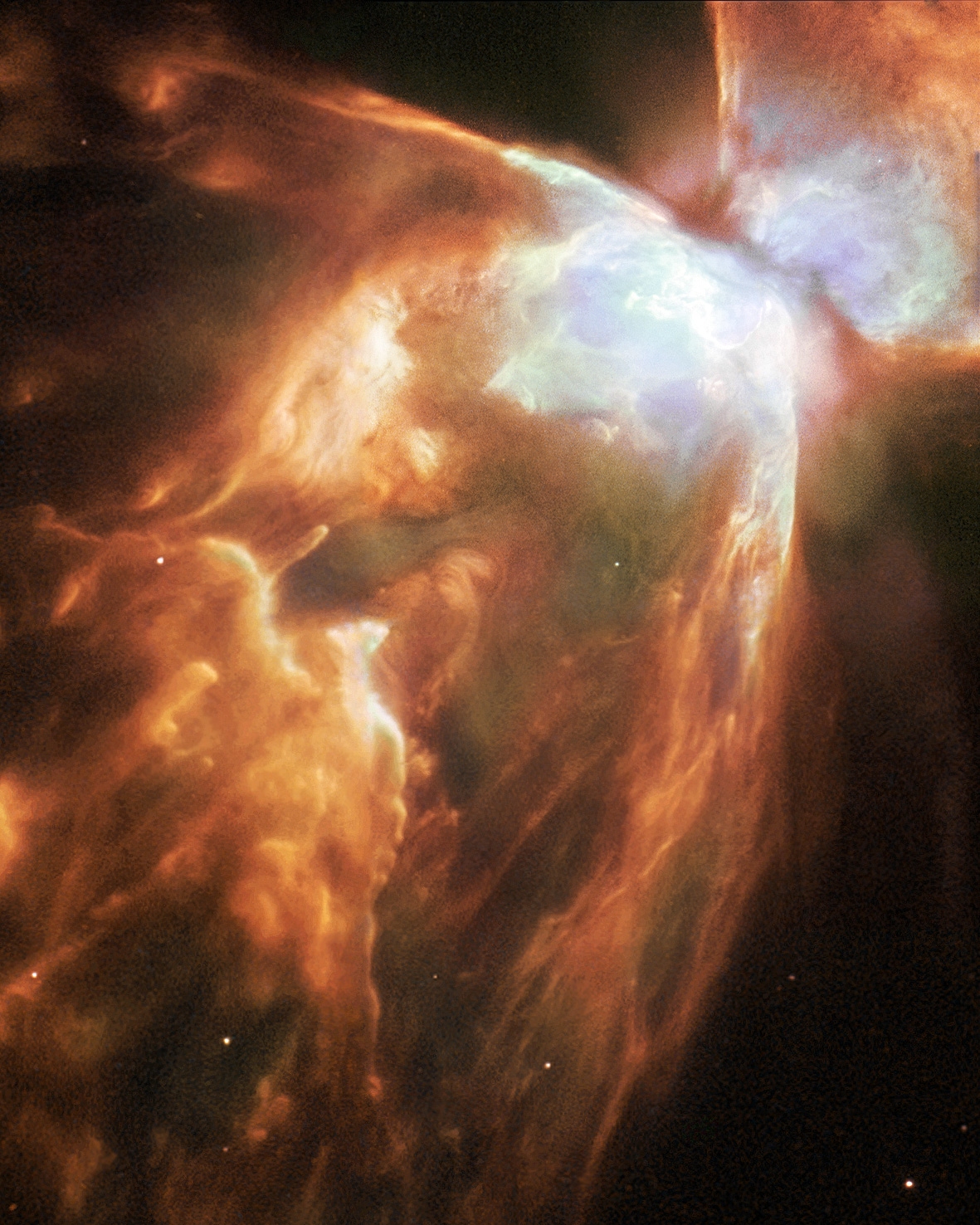
NGC 6302: Big, Bright, Bug Nebula
The bright clusters and nebulae of planet Earth's night sky are often named for flowers or insects, and NGC 6302 is no exception. With an estimated surface temperature of about 250,000 degrees C, the central star of this particular planetary nebula is exceptionally hot though -- shining brightly in ultraviolet light but hidden from direct view by a dense torus of dust. Above is a dramatically detailed close-up of the dying star's nebula recorded by the Hubble Space Telescope. Cutting across a bright cavity of ionized gas, the dust torus surrounding the central star is in the upper left corner of this view, nearly edge-on to the line-of-sight. Surprisingly, minerals including water ice, along with complex hydrocarbon molecules have been detected in this hot star's dusty cosmic shroud. NGC 6302 lies about 4,000 light-years away in the arachnologically correct constellation Scorpius